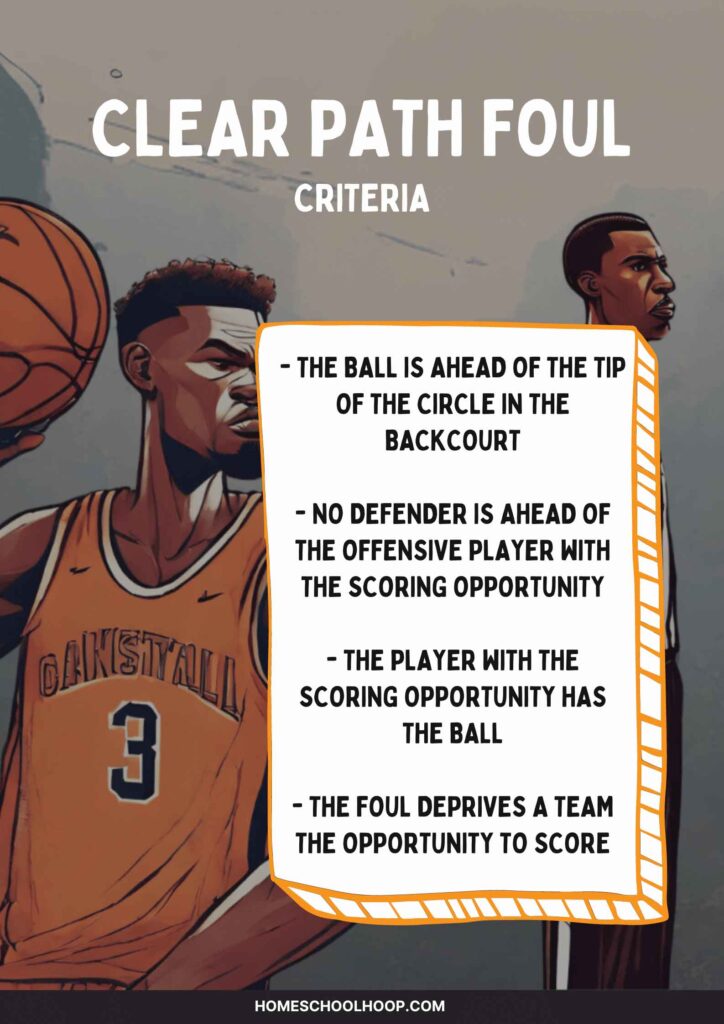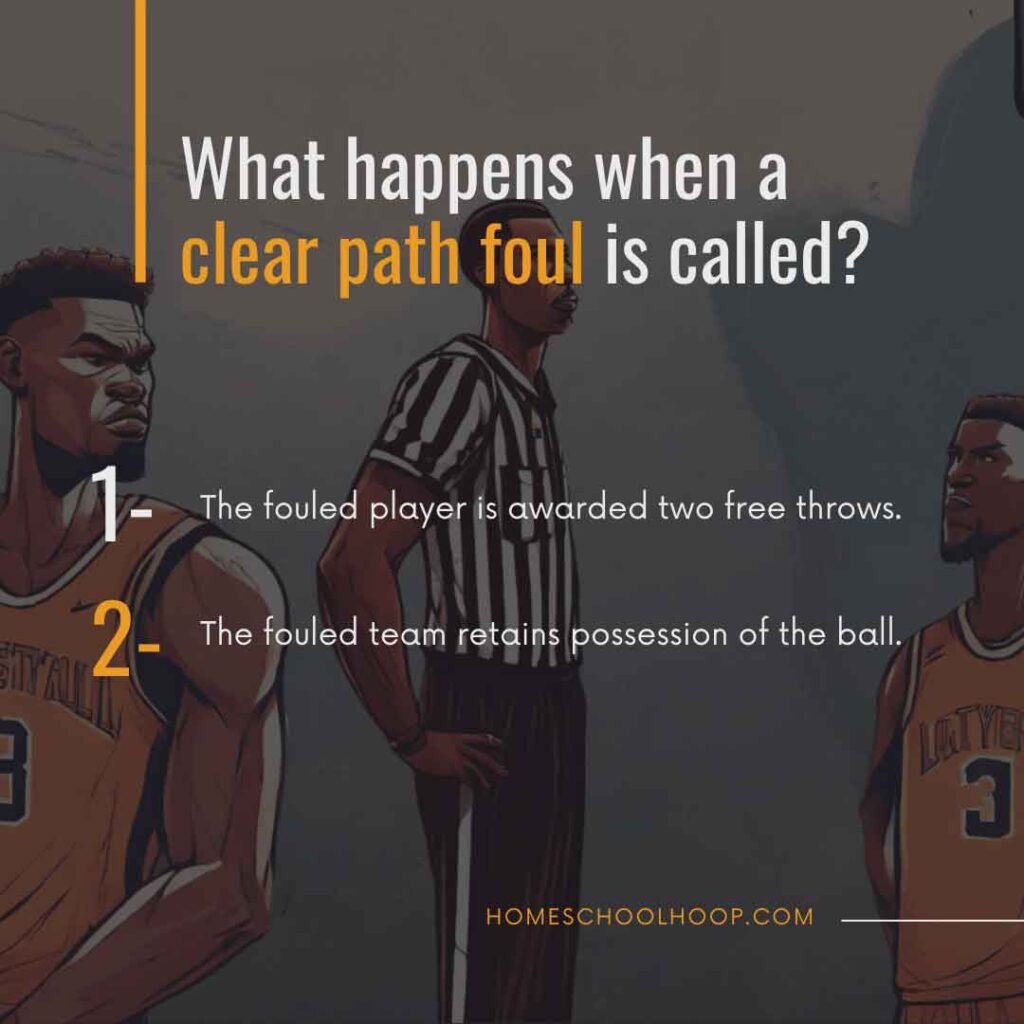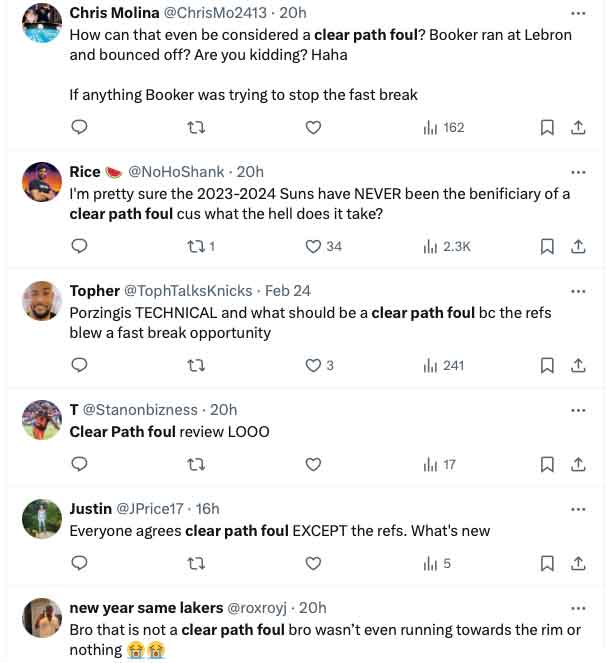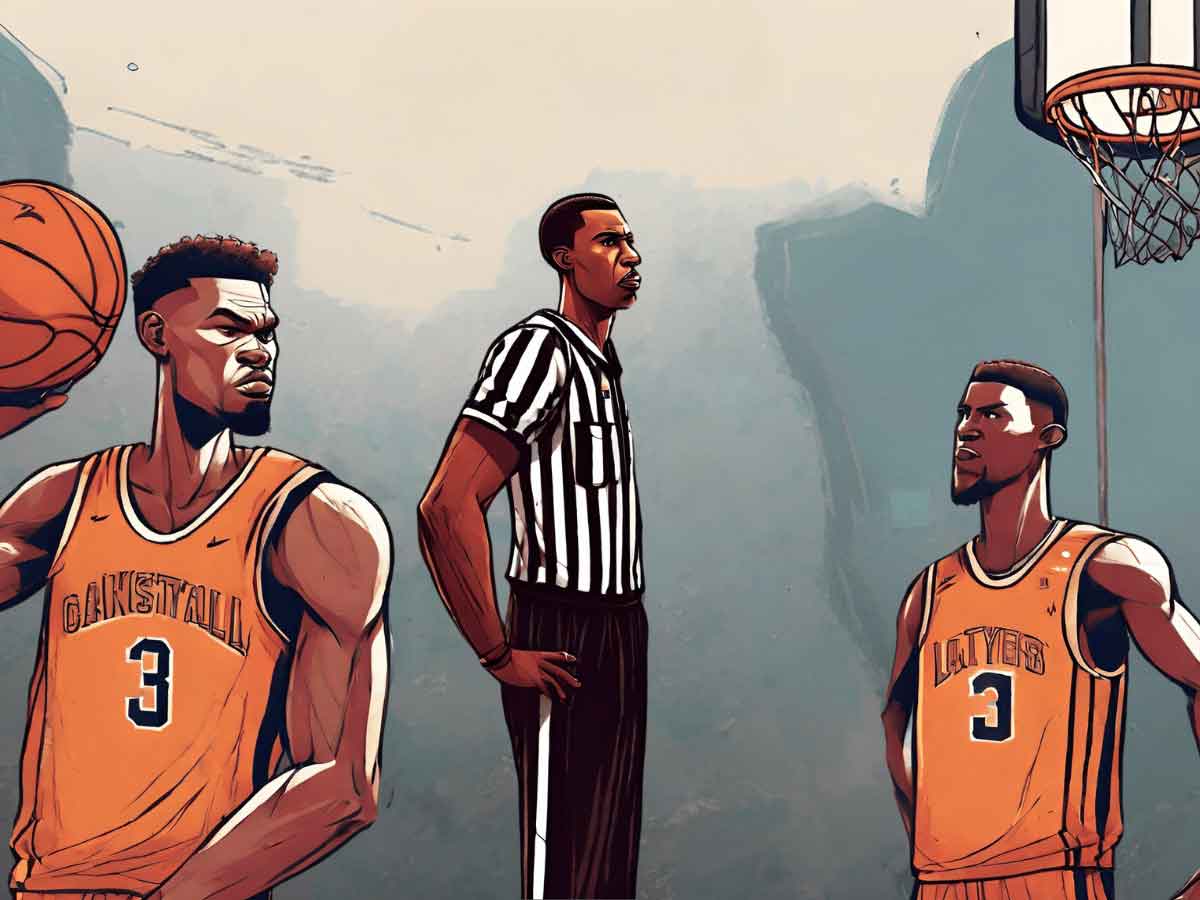Love it or hate it, the clear path foul is part of professional basketball. A clear path foul is when a defender commits a foul against an offensive player who has a clear path to the basket with no defender between them and the hoop. The call is almost always controversial, but it’s in place to prevent the defense from unfairly taking away a fast break opportunity.
Key Takeaways:
- A clear path foul is when a player is fouled on their way to an uncontested basket, with no defender ahead of them.
- This rule is meant to protect the chance to score during fast-break situations.
- Penalties include free throws and possession of the ball.
Here, we’ll dive into what exactly a clear path foul involves, why it’s such an important rule, how it affects the flow of the game, and the reasons it exists.
What is a Clear Path Foul?
A clear path foul in basketball is a type of personal foul that occurs under particular circumstances. It happens when a defensive player fouls an offensive player who has an unobstructed path to the basket, with no other defenders ahead.
Teams are penalized more severely for clear-path fouls. The rule is meant to ensure that the offensive team has a fair opportunity to score during a fast break by de-incentivizing the defense from committing an intentional foul as a tactic to stop an easy basket.
The NBA, WNBA, and FIBA implement the rule. It’s not a thing in NCAA or high school basketball.
How Does a Clear Path Foul Differ From a Take Foul?
While both the clear path foul and transition take foul are related to defenders unfairly stopping fast breaks, they have key differences:
- Take Foul: During a transition play, a defender commits a foul to stop the offense. It results in one free throw and the ball.
- Clear Path Foul: A defender commits a foul from behind with no defender ahead and a clear path to the basket. It results in two free throws and the ball.
When was the Clear Path Foul Introduced?
The modern definition of the clear path foul was introduced by the NBA ahead of the 2018-2019 season. On September 21, 2018, the NBA Board of Governors unanimously agreed to simplify the rule, make it less of a judgment call for the referees, and clearly distinguish it from the transition take foul. The WNBA Board of Governors approved the same rule updates ahead of the 2019 season.
The Criteria for a Clear Path Foul
Fouls have to meet the following four requirements for a referee to call a clear path foul:
- The ball is ahead of the tip of the circle in the backcourt
- No defender is ahead of the offensive player with the transition scoring opportunity
- The player with the transition scoring opportunity is in control of the ball (or a pass has been thrown to them)
- The foul deprives the player’s team of an opportunity to score.

So, if the foul is called while there’s a defender ahead of the play and getting back in transition, it is not a clear path foul.
Also, under the 2018 updates, it is no longer a clear path foul if the foul is committed in the act of shooting or caused by an interception or deflection attempt.
How Clear Path Fouls Are Penalized
When referees call a clear path foul, the penalties are meant to compensate the offended team for their lost high-quality scoring opportunity. The offense missed out on an easy basket, which is why the penalties are more severe than regular personal fouls.
NBA and WNBA
Here are the penalties for a clear path foul in the NBA and WNBA:
- Two Free Throws: The fouled player is awarded two free throws.
- Possession of the Ball: After the free throws, the fouled team retains possession of the ball. They get it out-of-bounds near where the foul occurred, but no closer to the baseline than the free throw line extended.

FIBA
FIBA, the International Basketball Federation, also recognizes the clear path foul. However, FIBA rules categorize it as an unsportsmanlike foul. Players who receive two unsportsmanlike fouls are disqualified from the game.
Also, the penalties are slightly different:
- Two Free Throws: Like in the NBA and WNBA, the fouled team is awarded two free throws.
- Possession of the Ball: Following the free throws, the fouled team retains ball possession, receiving it out-of-bounds at the center line opposite the scorer’s table.
The Controversy Surrounding Clear Path Fouls
Players, coaches, analysts, and certainly fans, have strong feelings about clear path fouls.
Most of the controversy centers on enforcement. Some think referees are selective in when they call the fouls and on whom (although to be honest, most of this stems from fans not fully understanding the rule’s requirements).
I mean, take a look at this small selection of recent Tweets from fans:

There’s also controversy around whether these fouls should carry heavier penalties than regular personal fouls and how they influence the pace and enjoyment of the game.
Arguments For
Supporters of the foul argue that it plays an important role for several reasons:
- Fairness: It makes sure that teams have a fair chance to score during their earned fast-break advantages.
- Pace of the Game: By penalizing clear path fouls more severely, teams are less likely to break up fast breaks with a foul. This keeps the game moving and more exciting.
- Strategic Play: The rule encourages teams to play more strategically and protect the ball.
Arguments Against
Critics of the rule raise these points:
- Penalty Severity: There’s a belief that the penalties for clear path fouls are too harsh and they shouldn’t be different from any other type of illegal contact personal foul (outside of flagrant fouls).
- Disrupts Strategic Play: Some believe fouling on purpose has a place in today’s game and that teams should be able to use a foul to break up fast breaks. It may also encourage cherry-picking in basketball because players will want to break for offense early.
- Complexity: The criteria for determining the foul can be complex, leading to confusion and inconsistent calls by referees.
FAQs
What is a clear path foul in the NBA?
A clear path foul in the NBA is when a defensive player fouls an offensive player who has no defender between them and the basket, breaking up a clear opportunity to score. It’s designed to prevent the defense from unfairly stopping a fast break by fouling.
What differentiates a clear path foul from a take foul?
The key difference is the situation. A clear path foul specifically involves a scenario where an offensive player has an unobstructed path to the basket. A take foul, on the other hand, is a strategic foul to halt transition play and can occur anywhere on the court, not necessarily under clear path conditions.
Why is a clear path foul so severely penalized?
A clear path foul is severely penalized to ensure that teams don’t unfairly prevent scoring opportunities during fast breaks with a foul.
When was the clear path foul introduced?
The NBA and WNBA’s current clear path foul rule was put into place in 2018 to clarify the requirements of a clear scoring opportunity during a fast break was unfairly stopped by a foul.
What happens after a clear-path foul?
After a clear path foul, the fouled team is awarded two free throws and retains possession of the ball.
RULE CHANGE SUGGESTIONS?
Today, you learned about the clear path foul.
So we want to know: If you could suggest a change to the foul rule to make basketball more exciting or fair, what would it be?
Share your ideas and the reasons behind them in the comments.


